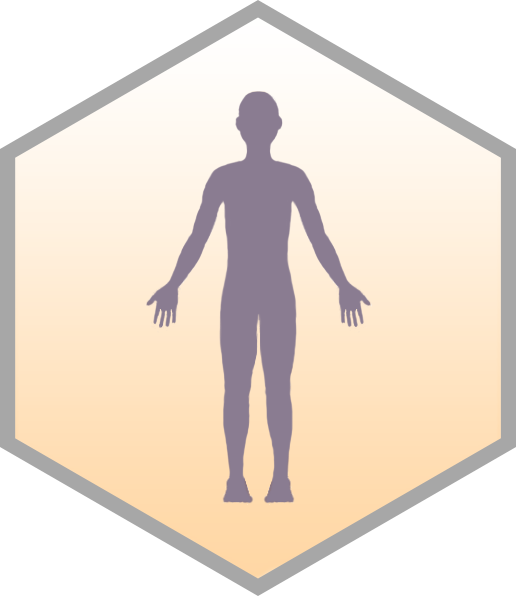ZAP1 / YJL056C Overview
- Standard Name
- ZAP1 1
- Systematic Name
- YJL056C
- SGD ID
- SGD:S000003592
- Aliases
- ZRG10 5
- Feature Type
- ORF , Verified
- Description
- Zinc-regulated transcription factor; binds to zinc-responsive promoters to induce transcription of certain genes in presence of zinc, represses other genes in low zinc; regulates its own transcription; contains seven zinc-finger domains 1 2 3 4
- Name Description
- Zinc-responsive Activator Protein 1
- Comparative Info
-





Sequence
The S. cerevisiae Reference Genome sequence is derived from laboratory strain S288C. Download DNA or protein sequence, view genomic context and coordinates. Click "Sequence Details" to view all sequence information for this locus, including that for other strains.
Analyze Sequence
S288C only
BLASTN | BLASTP | Design Primers | Restriction Fragment Map | Restriction Fragment Sizes | Six-Frame Translation
S288C vs. other species
BLASTN vs. fungi | BLASTP at NCBI | BLASTP vs. fungi
S288C vs. other strains
Protein
Basic sequence-derived (length, molecular weight, isoelectric point) and experimentally-determined (median abundance, median absolute deviation) protein information. Click "Protein Details" for further information about the protein such as half-life, abundance, domains, domains shared with other proteins, protein sequence retrieval for various strains, physico-chemical properties, protein modification sites, and external identifiers for the protein.
- Length (a.a.)
- 880
- Mol. Weight (Da)
- 98854.8
- Isoelectric Point
- 7.02
- Median Abundance (molecules/cell)
- 1057 +/- 681
Alleles
Curated mutant alleles for the specified gene, listed alphabetically. Click on the allele name to open the allele page. Click "SGD search" to view all alleles in search results.
View all ZAP1 alleles in SGD search
Gene Ontology
GO Annotations consist of four mandatory components: a gene product, a term from one of the three Gene Ontology (GO) controlled vocabularies (Molecular Function, Biological Process, and Cellular Component), a reference, and an evidence code. SGD has manually curated and high-throughput GO Annotations, both derived from the literature, as well as computational, or predicted, annotations. Click "Gene Ontology Details" to view all GO information and evidence for this locus as well as biological processes it shares with other genes.
- Summary
- DNA-binding RNA polymerase II transcription factor involved in response to zinc ion starvation; binds zinc
View computational annotations
Molecular Function
- Manually Curated
Biological Process
- Manually Curated
- involved in cellular response to zinc ion starvation (IDA, IMP)
- involved in positive regulation of transcription by RNA polymerase II (IMP, IDA)
- involved in regulation of transcription by RNA polymerase II (IMP)
Phenotype
Phenotype annotations for a gene are curated single mutant phenotypes that require an observable (e.g., "cell shape"), a qualifier (e.g., "abnormal"), a mutant type (e.g., null), strain background, and a reference. In addition, annotations are classified as classical genetics or high-throughput (e.g., large scale survey, systematic mutation set). Whenever possible, allele information and additional details are provided. Click "Phenotype Details" to view all phenotype annotations and evidence for this locus as well as phenotypes it shares with other genes.
- Summary
- Non-essential gene; null mutants exhibit impaired growth, fitness and endocytosis, abnormal vacuolar morphology, increased sensitivity to oxidative stress, pH perturbations, caffeine, herbicides, chelators, antimalarials, antimicrobials, and various antibiotics; null shows increased dessication resistance, glycogen accumulation, and glutathione excretion; overexpression impairs growth
Classical Genetics
- null
- acid pH resistance: decreased
- alkaline pH resistance: decreased
- chemical compound accumulation: abnormal
- chemical compound accumulation: decreased
- chemical compound accumulation: increased
- chemical compound excretion: increased
- competitive fitness: decreased
- endocytosis: decreased
- haploproficient
- killer toxin resistance: increased
- oxidative stress resistance: decreased
- resistance to chemicals: decreased
- resistance to chemicals: increased
- utilization of carbon source: decreased
- utilization of iron source: decreased
- vacuolar morphology: abnormal
- vegetative growth: decreased
- vegetative growth: decreased rate
- viable
- overexpression
Large-scale Survey
Interaction
Interaction annotations are curated by BioGRID and include physical or genetic interactions observed between at least two genes. An interaction annotation is composed of the interaction type, name of the interactor, assay type (e.g., Two-Hybrid), annotation type (e.g., manual or high-throughput), and a reference, as well as other experimental details. Click "Interaction Details" to view all interaction annotations and evidence for this locus, including an interaction visualization.
94 total interactions for 77 unique genes
Physical Interactions
- Affinity Capture-MS: 1
- Affinity Capture-RNA: 5
- Co-purification: 1
- PCA: 1
- Protein-RNA: 1
- Two-hybrid: 2
Genetic Interactions
- Dosage Growth Defect: 4
- Negative Genetic: 35
- Phenotypic Enhancement: 1
- Phenotypic Suppression: 29
- Positive Genetic: 8
- Synthetic Growth Defect: 1
- Synthetic Lethality: 4
- Synthetic Rescue: 1
Regulation
The number of putative Regulators (genes that regulate it) and Targets (genes it regulates) for the given locus, based on experimental evidence. This evidence includes data generated through high-throughput techniques. Click "Regulation Details" to view all regulation annotations, shared GO enrichment among regulation Targets, and a regulator/target diagram for the locus.
- Summary
- ZAP1 encodes a zinc-sensing transcription factor that regulates the cellular response to zinc deficiency. Under zinc depletion, Zap1p activates transcription of ~80 genes, and represses expression of a small number of genes. Zap1p target genes are involved in zinc homeostasis and metabolic adaptation to zinc deficiency. Zap1p is inactivated when zinc is in abundance. Zap1p contains a DNA-binding domain and multiple transcription activation domains, all of which bind zinc. The DNA binding domain is located toward the C-terminus and consists of five C2H2 zinc fingers. In zinc-deficient cells, Zap1p binds as a monomer to a palindromic zinc-responsive element (ZRE), 5'-ACCTTNAAGGT-3'. Zap1p-regulated promoters typically contain one or a few recognizable ZREs. The ZAP1 gene contains a ZRE and is activated by Zap1p, thereby increasing the amount of cellular Zap1p during zinc limitation. ZREs with the highest binding affinity for Zap1p tend to appear in genes activated by mild iron deficiency, which suggests that Zap1p occupies lower-affinity sites only when the Zap1p levels rise, as they do in severe zinc deficiency. Zap1p regulates expression of zinc transporters that transfer extracellular zinc into the cell and the vacuolar zinc to the cytosol. Zrt1p and Zrt2p are high- and low-affinity zinc transporters of the ZIP family. ZRT2 is repressed by Zap1p under conditions of severe zinc limitation. This repression is mediated through a lower-affinity ZRE in the ZRT2 promoter. Activation of ZRT2 is mediated by Zap1p binding to high-affinity ZREs located upstream of the TATA box. Severe zinc deficiency increases the levels of Zap1p through autoactivation of its own promoter. Zap1p can then also bind to a lower affinity ZRE located near the transcription start site of ZRT2, inhibiting transcription. Under conditions where zinc levels are too low for ZRT2 to function, expression is repressed. In zinc-replete conditions, zinc storage is mediated by two transporters on the vacuolar membrane, Cot1p and Zrc1p. Under conditions of zinc deficiency, vacuolar zinc stores are mobilized through the activity of Zrt3p, a ZIP family transporter on the vacuolar membrane. ZRC1 is also induced by Zap1p during zinc deficiency as a protective measure for cells exposed to sudden influx of zinc produced by expression of uptake systems at high levels. Fet4p is a low-affinity, broad-specificity metal transporter, the expression of which is induced by Zap1p under zinc-limiting conditions. Zrg17p, part of a heterodimeric transporter with Msc2p that transfers zinc from the cytosol to the ER lumen, and member of the cation diffusion facilitator family of efflux pumps, is also zinc-regulated directly through Zap1p.
Expression
Expression data are derived from records contained in the Gene Expression Omnibus (GEO), and are first log2 transformed and normalized. Referenced datasets may contain one or more condition(s), and as a result there may be a greater number of conditions than datasets represented in a single clickable histogram bar. The histogram division at 0.0 separates the down-regulated (green) conditions and datasets from those that are up-regulated (red). Click "Expression Details" to view all expression annotations and details for this locus, including a visualization of genes that share a similar expression pattern.
Literature
All manually curated literature for the specified gene, organized into topics according to their relevance to the gene (Primary Literature, Additional Literature, or Review). Click "Literature Details" to view all literature information for this locus, including shared literature between genes.